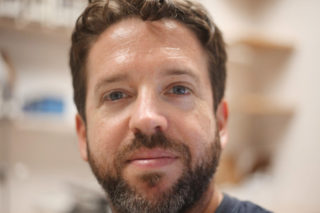
Dr. Dan Carlson is an observational physical oceanographer with interests in ocean transport and mixing. Dr. Carlson received his M.S. in Physical Oceanography at Florida State University in March 2007 and then traveled to the Weizmann Institute of Science in Israel on a Fulbright Grant. After the Fulbright, Dr. Carlson returned to Israel to study internal tides and mixing in the northern Red Sea. Dr. Carlson received his Ph.D. from the Hebrew University in Jerusalem in 2014 and has since worked at the Italian National Research Council (CNR), the Arctic Research Centre in Aarhus University, and Florida State University.
Dr. Carlson joined the Consortium for Advanced Research on Transport of Hydrocarbon in the Environment (CARTHE) in 2015 and has since worked to develop the Ship-Tethered Aerostat Remote Sensing System (STARRS). STARRS is comprised of an aerostat (large helium balloon) that lifts a high-resolution camera, GPS, orientation sensors, and communications equipment up to altitudes of 150 m/500 ft. STARRS is towed behind a ship and is used to deduce transport and dispersion at the sea surface at spatial scales of 10-100 m and time scales of 30 min to a few hours. Surface dispersion measurements during CARTHE’s Lagrangian Submesoscale Experiment (LASER) provide unprecedented observations of small-scale dispersion. Following a successful deployment in LASER, Dr. Carlson is now working to adapt the STARRS payload to a smaller, more manageable quadcopter platform.
The quadcopter will be used in a similar role during CARTHE’s upcoming Submesoscale Processes and Lagrangian Analysis on the Shelf (SPLASH) experiment. SPLASH is currently scheduled for Spring 2017 and will involve multiple, overlapping observational platforms that will provide the first simultaneous observations of surface dispersion from scales of centimeters to 100s of km.
